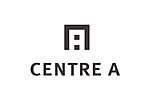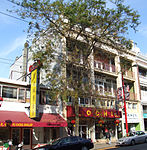Dr. Sun Yat-Sen Classical Chinese Garden
Chinese-Canadian culture in VancouverChinese gardensGardens in CanadaMonuments and memorials to Sun Yat-senParks in Vancouver ... and 1 more
Tourist attractions in Vancouver

The Dr. Sun Yat-Sen Classical Chinese Garden (simplified Chinese: 中山公园; traditional Chinese: 中山公園; pinyin: Zhōngshān Gōngyuán; Jyutping: Zung1saan1 Gung1jyun4) is the first Chinese or "scholars" garden built outside of China, and is located in Chinatown in Vancouver, British Columbia, Canada. It is located at 578 Carrall Street and consists of a freely accessible public park and a garden with an admission fee. The mandate of the garden is to "maintain and enhance the bridge of understanding between Chinese and western cultures, promote Chinese culture generally and be an integral part of the local community."
Excerpt from the Wikipedia article Dr. Sun Yat-Sen Classical Chinese Garden (License: CC BY-SA 3.0, Authors, Images).Dr. Sun Yat-Sen Classical Chinese Garden
Carrall Street, Vancouver
Geographical coordinates (GPS) Address Phone number Website External links Nearby Places Show on map
Geographical coordinates (GPS)
| Latitude | Longitude |
|---|---|
| N 49.279551 ° | E -123.103416 ° |
Address
Dr. Sun Yat-Sen Classical Chinese Garden
Carrall Street 578
Vancouver
British Columbia, Canada
Open on Google Maps





